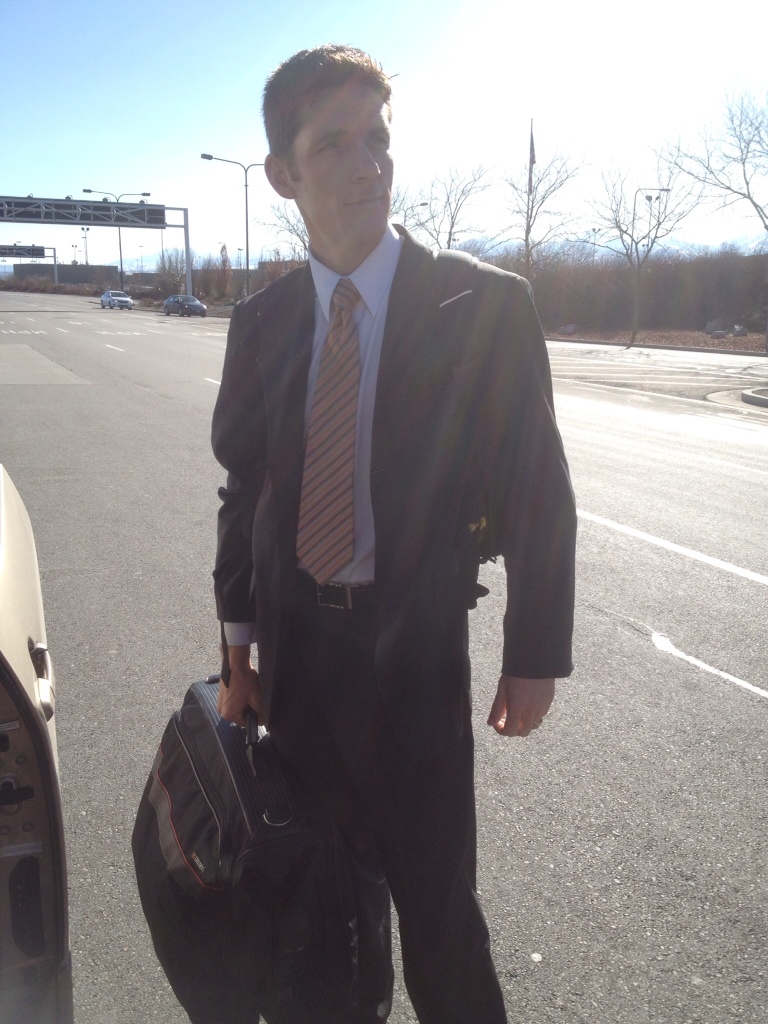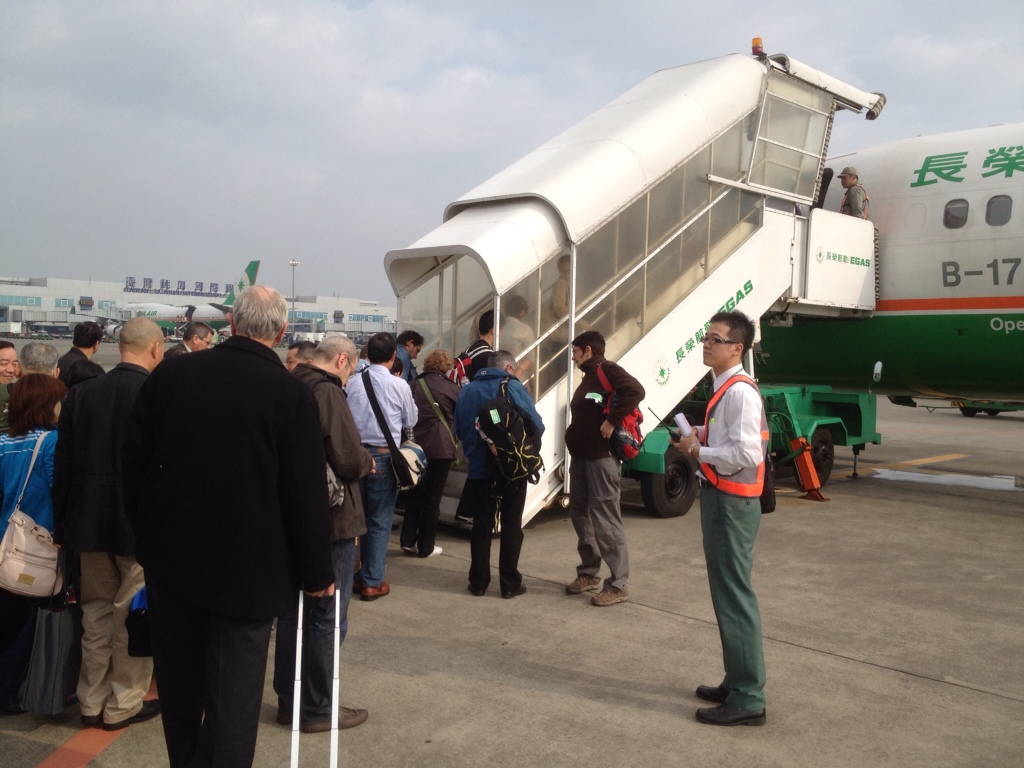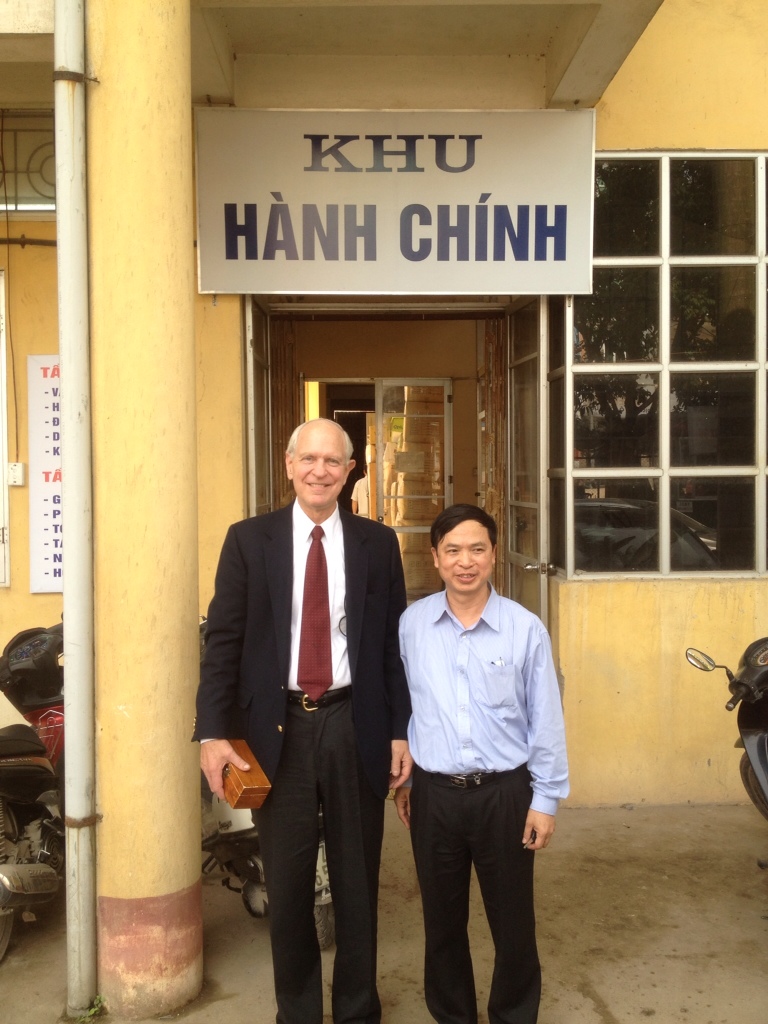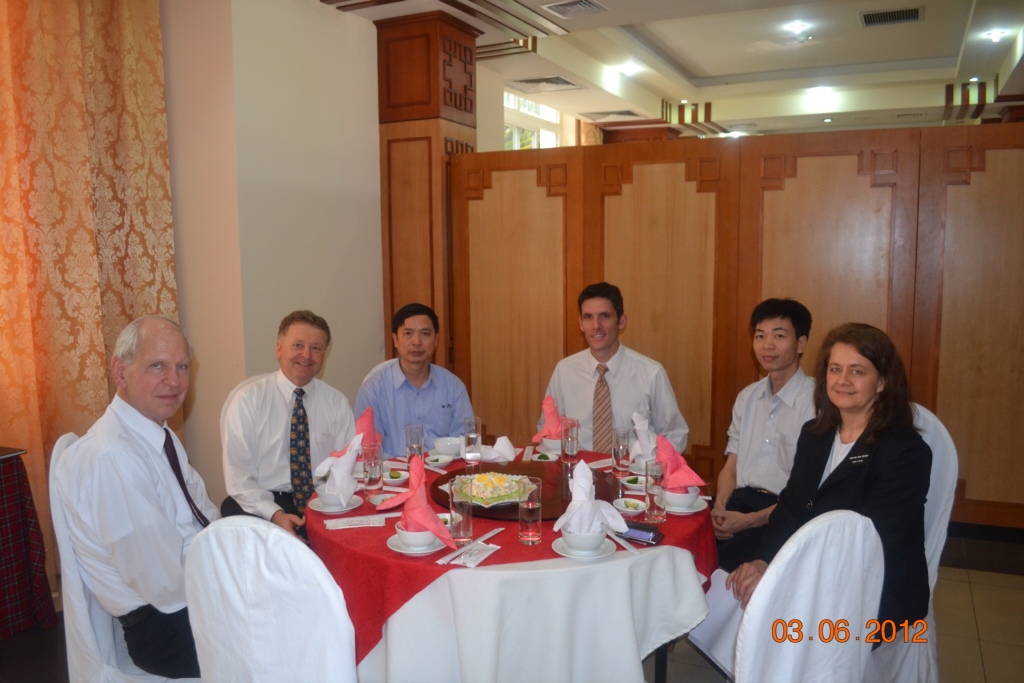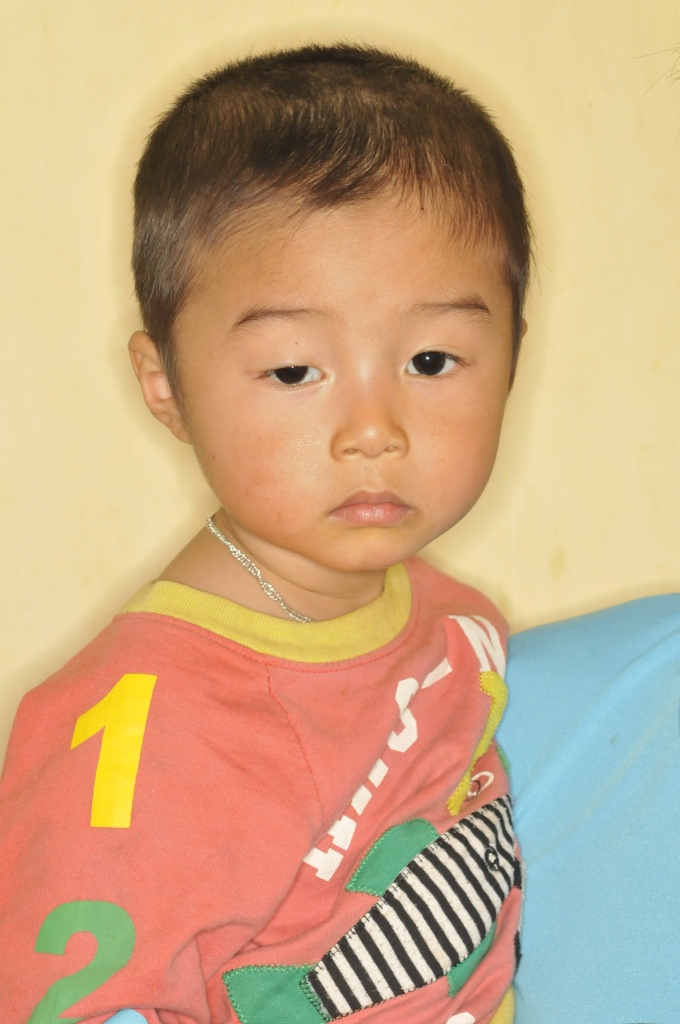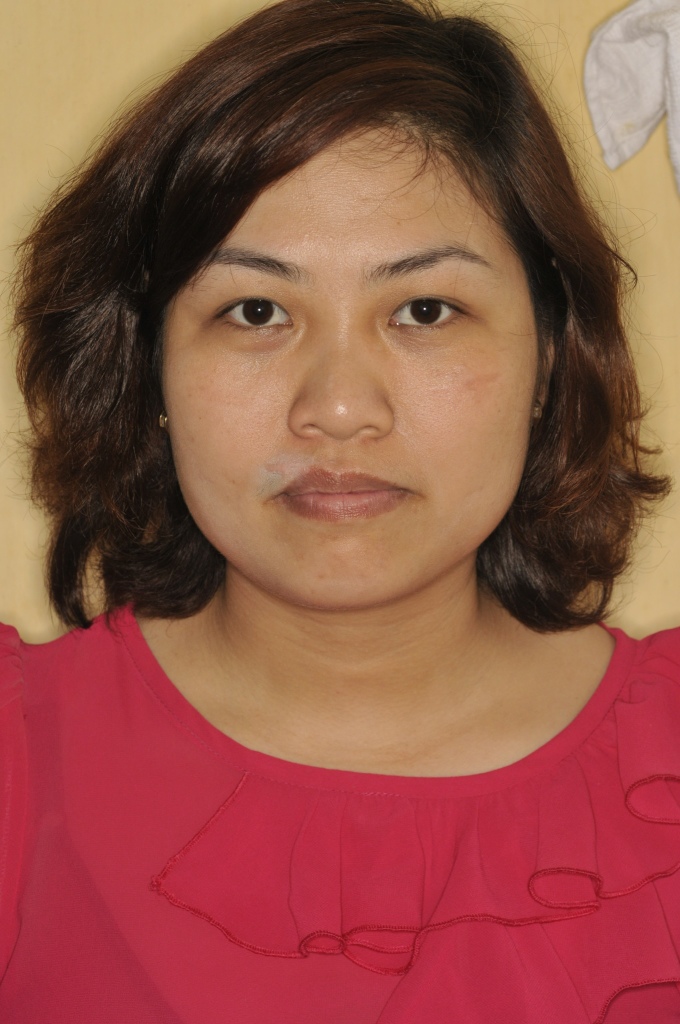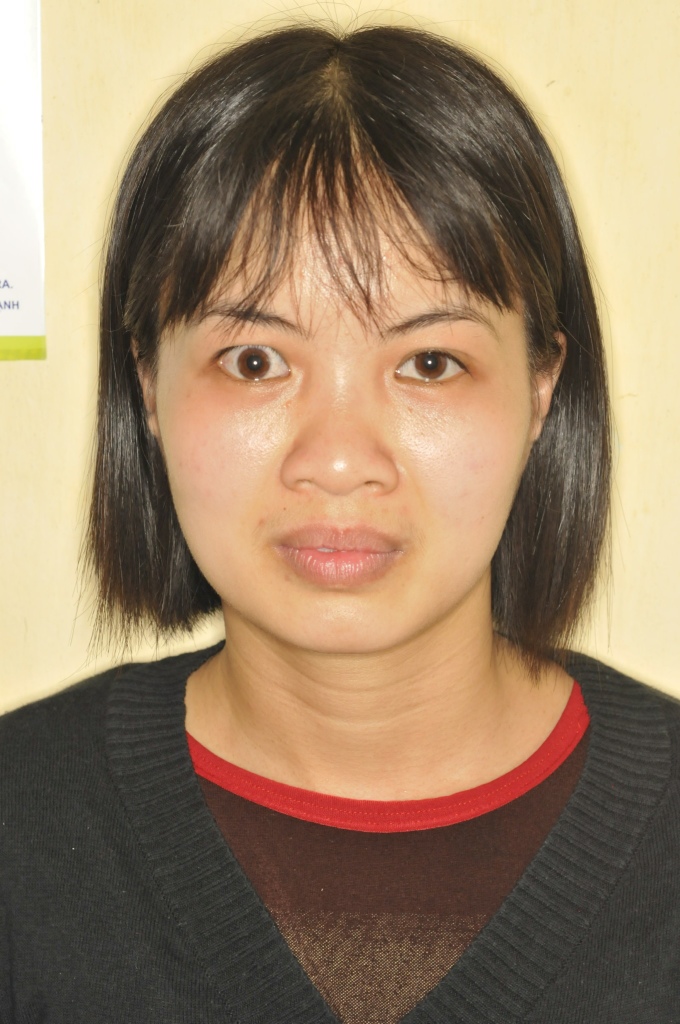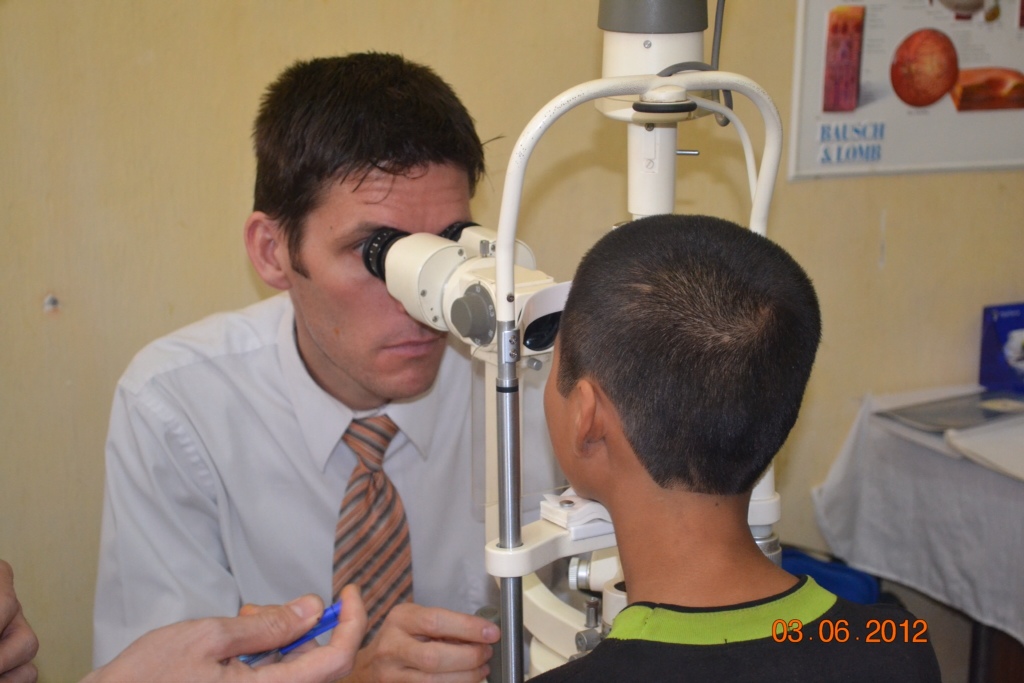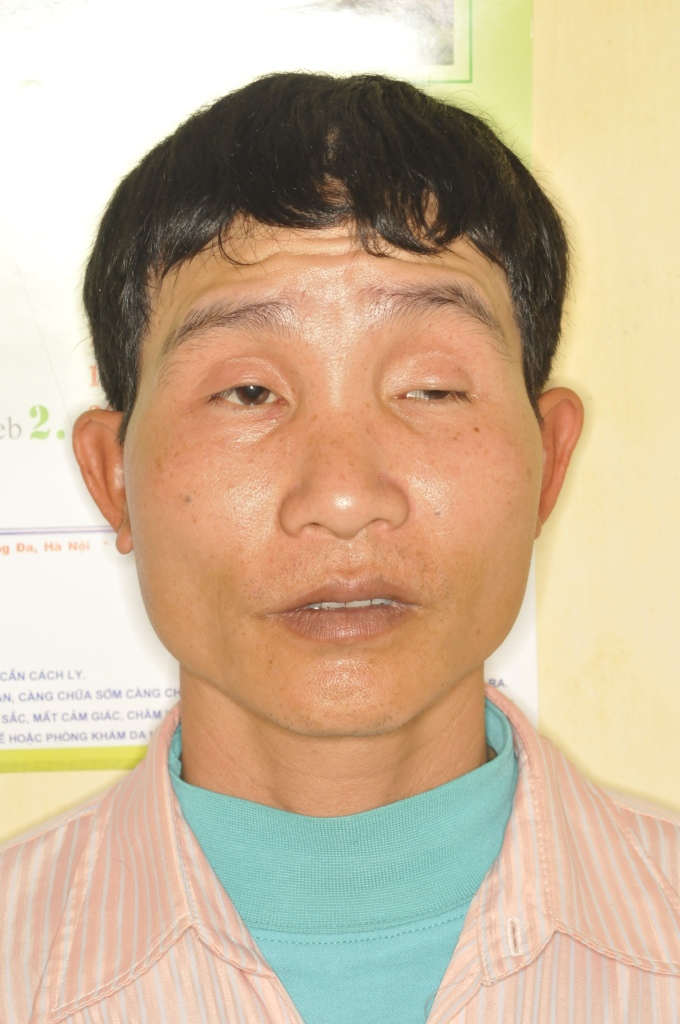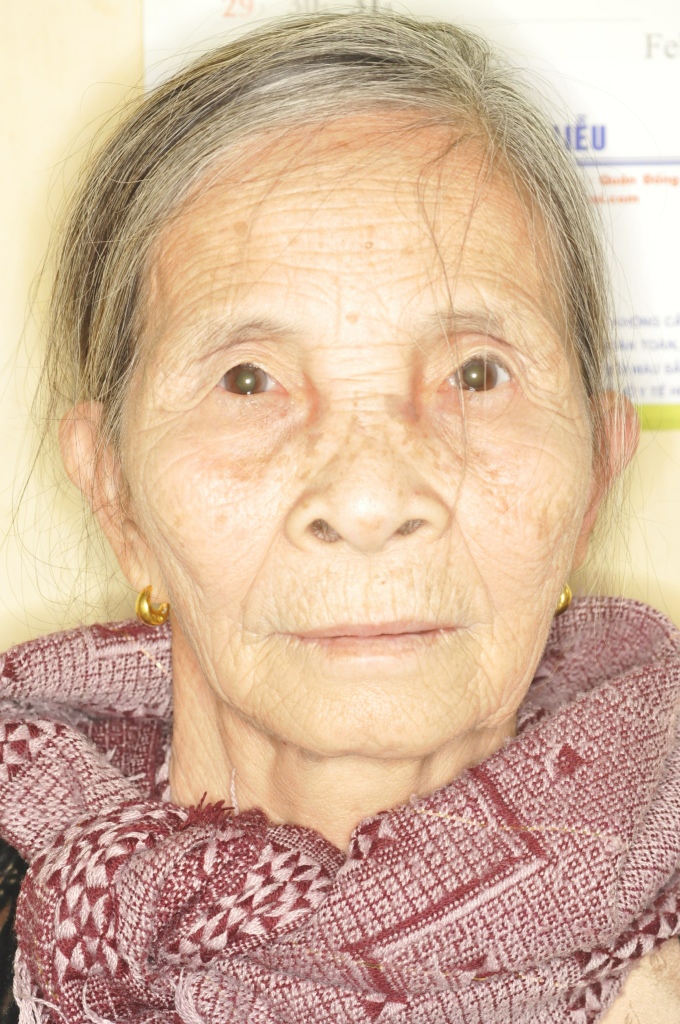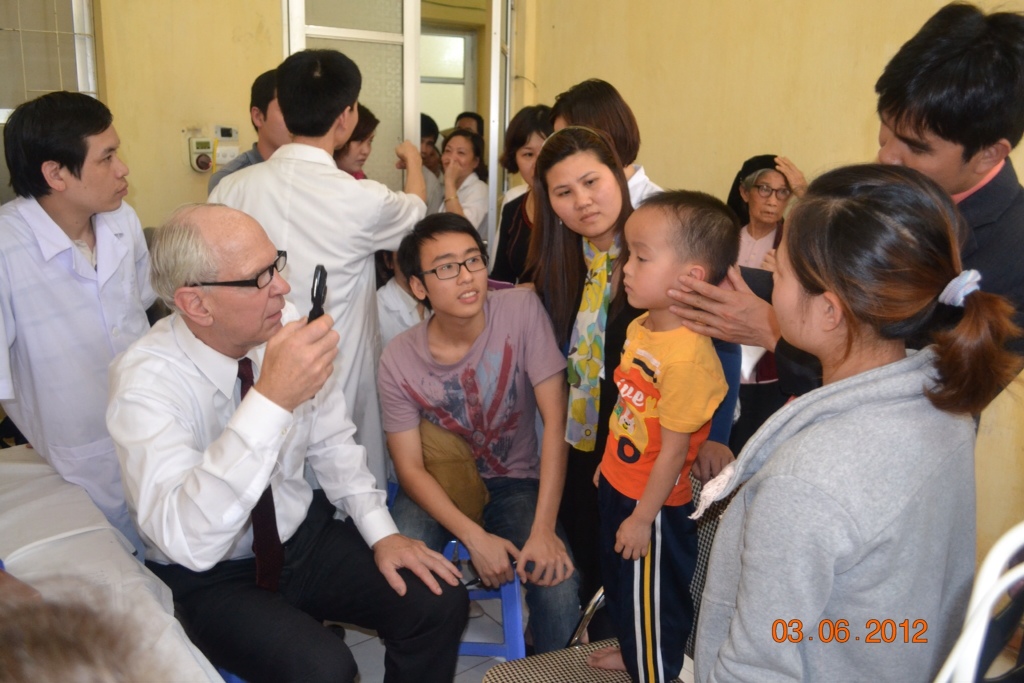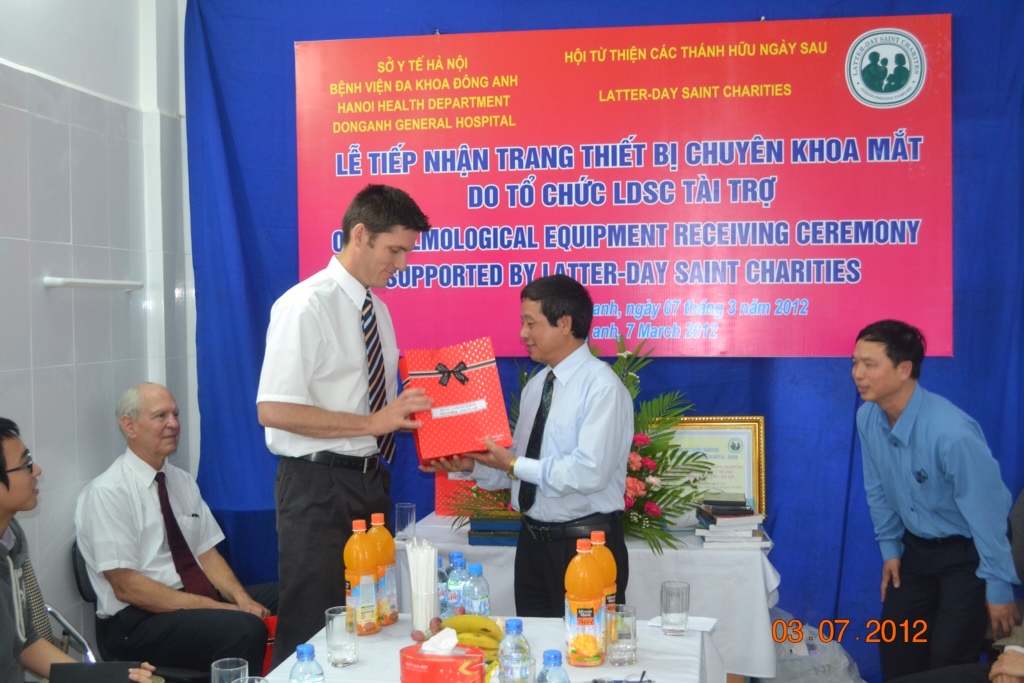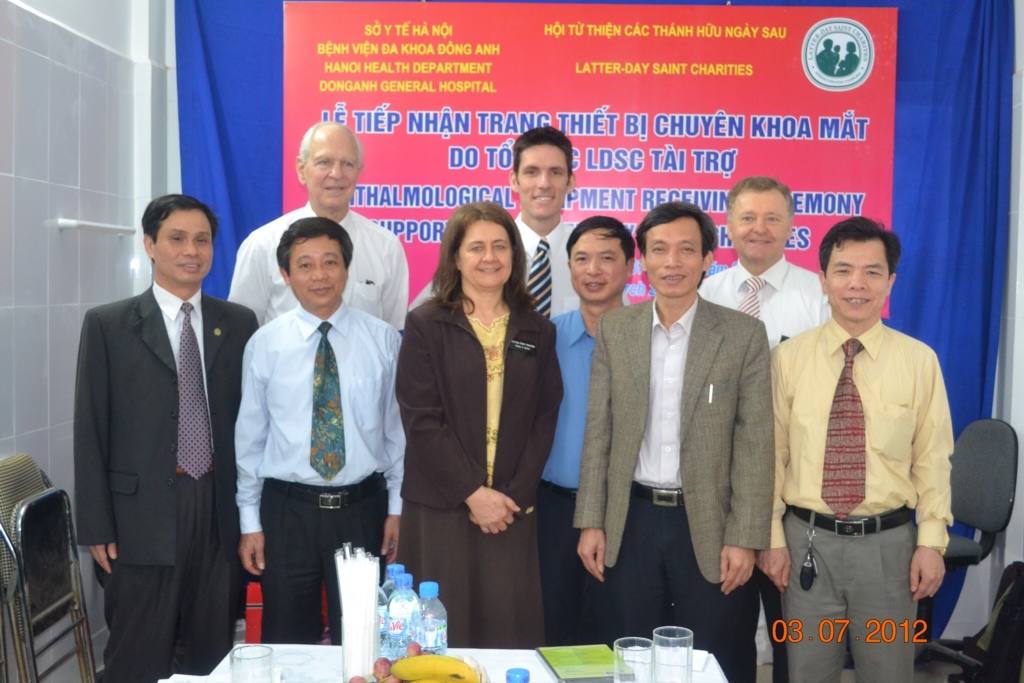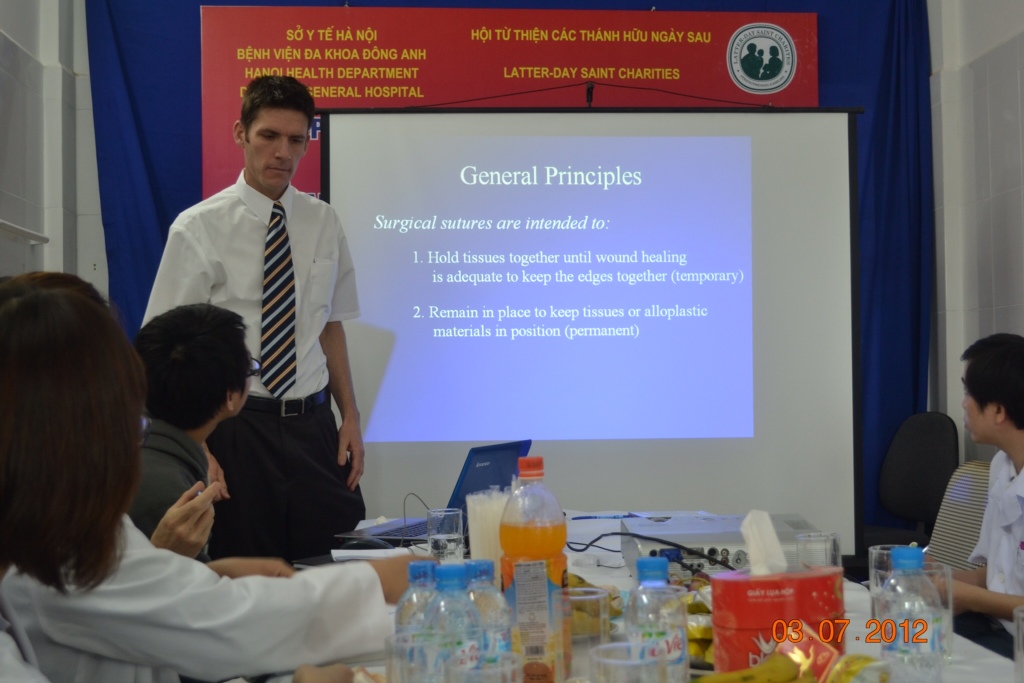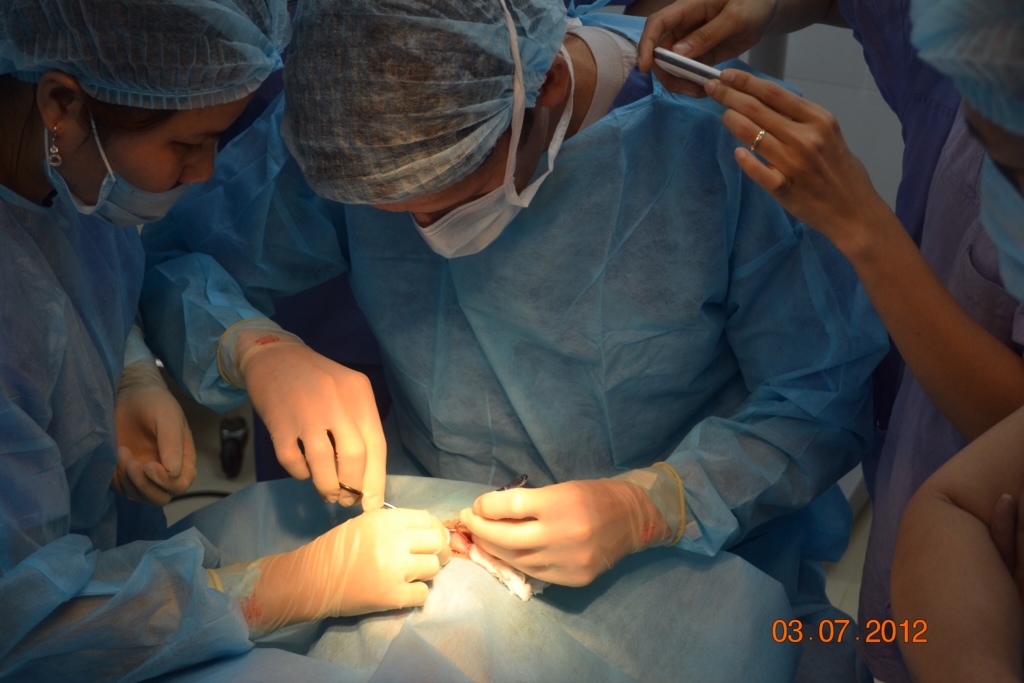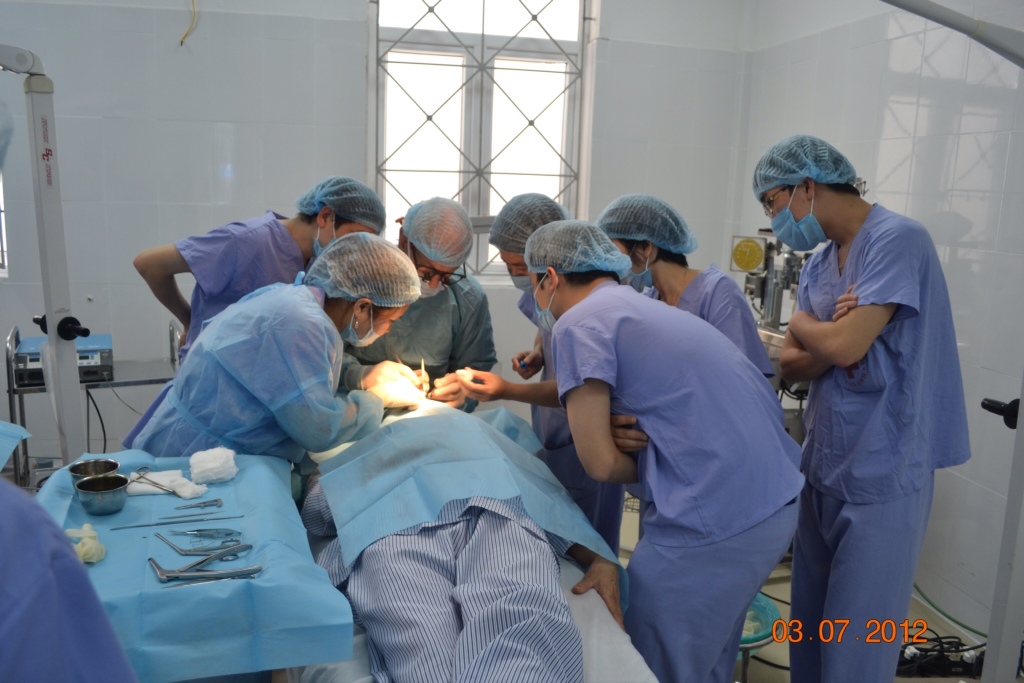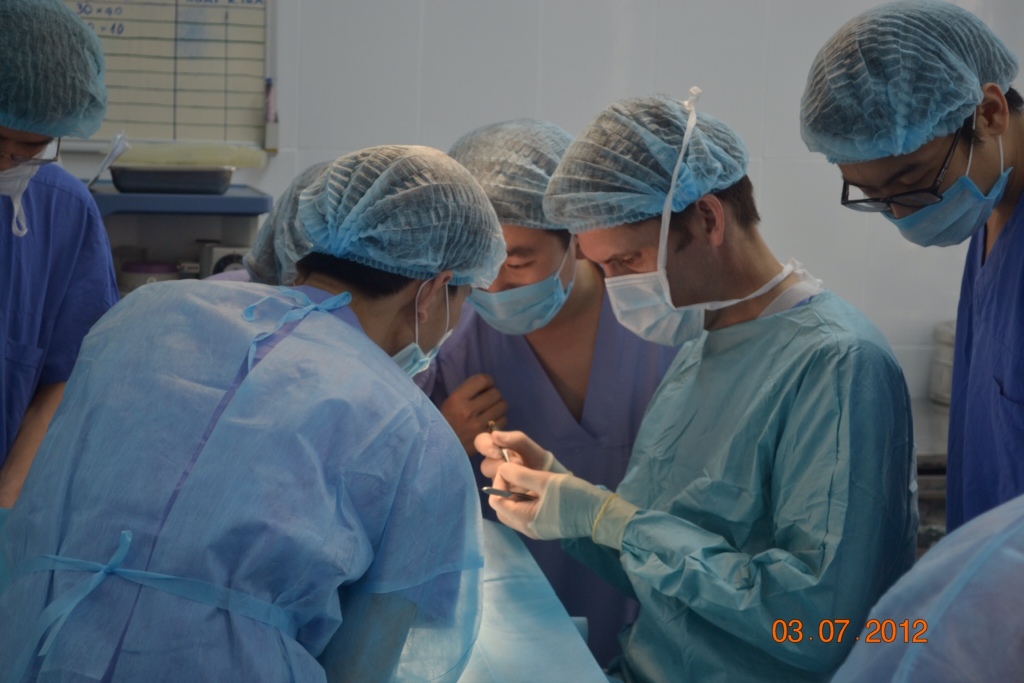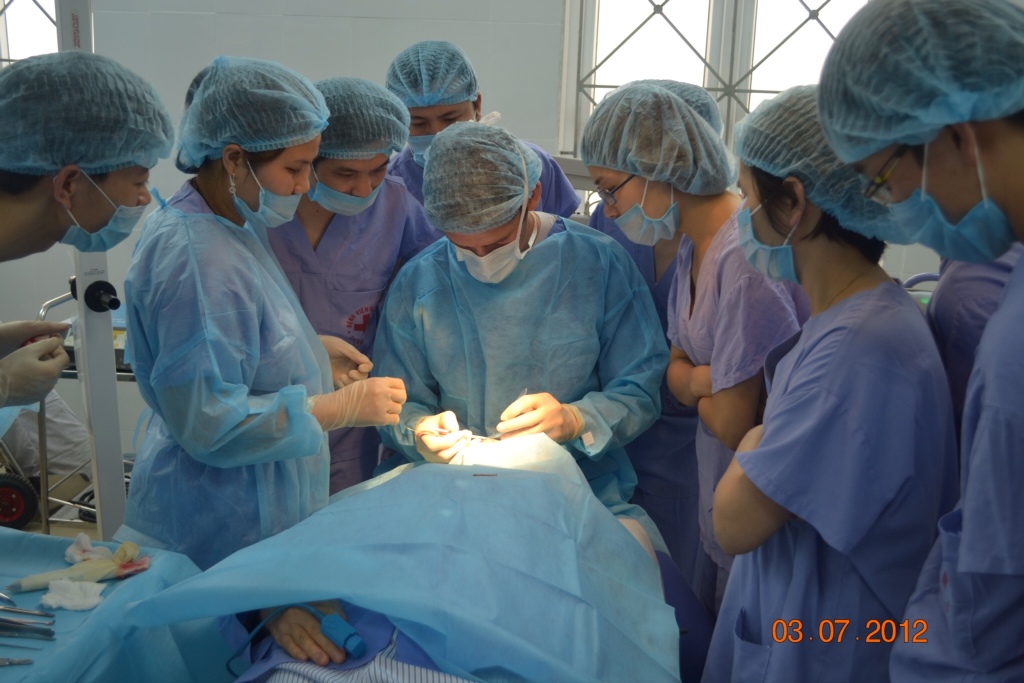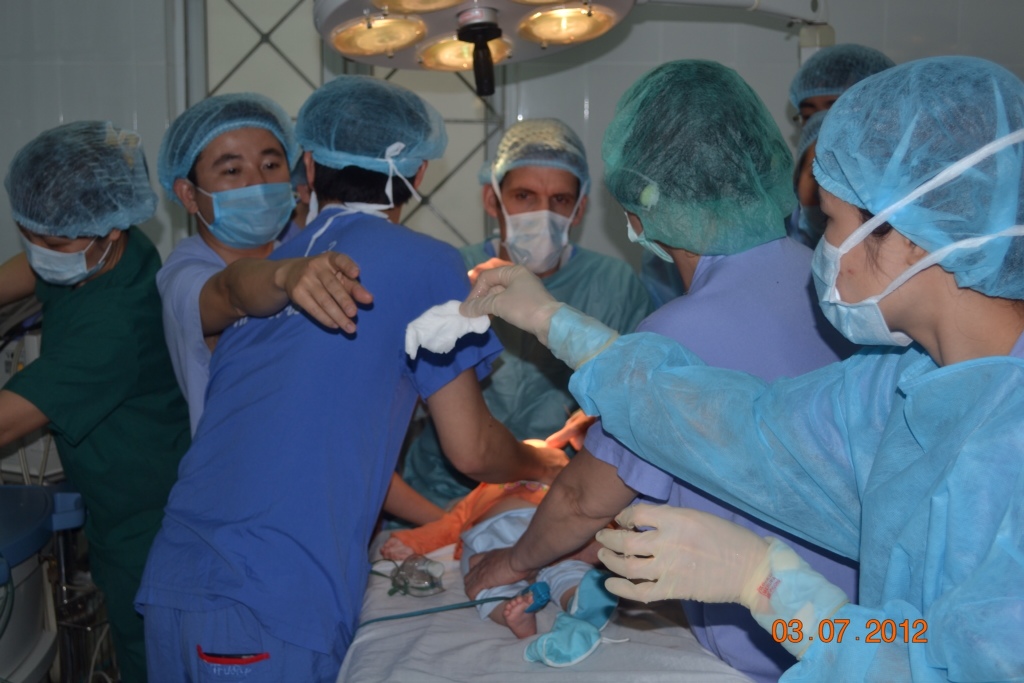Vietnam 2012
Several months ago, my partner Dr. Branson Call asked me if I’d like to accompany him to Hanoi for a medical mission he and LDS Charities had been planning for several months. I jumped at the chance. After a few delays, we finally made our way to Vietnam on March 4th.
Day one:
We arrived in Hanoi around noon on Tuesday the 6th. We came via San Francisco and Taipei. We were met by a couple of LDS Charities service missionaries, Brother and Sister Michel from Sandy, Utah. They have been in Vietnam for almost 16 months and have spent over a year organizing our trip. When you combine the church and a communist country, the amount of red tape required to accomplish anything becomes daunting. Nonetheless, they managed to secure a new operating microscope, several trays of oculoplastic instruments and other incidental supplies. They were a very enthusiastic couple and were a great help.
The Michel’s rode with us by taxi to Dong Anh, a town outside of Hanoi. We met the doctors from the hospital at our hotel, where they had a very fancy lunch for us, including barbecue pork, salmon, various soups, rice and lots of great fruit. One fruit called buey (sp?) appeared like the inside of a grapefruit, but was much sweeter. The dragon fruit was also very good. From lunch we went to the hospital a few kilometers away. The building wasn’t in great shape and due to the high humidity, most of the buildings start looking run down quickly. We went inside and had a planning meeting for the rest of our trip, which we were told would consist of lectures in the morning to various doctors from the area, followed by lots of surgery in the afternoons.
That afternoon, we proceeded to a small clinic next door, which contained 1 slit lamp microscope, a table and chair, and a few other random pieces of equipment. We were quickly introduced to the Vietnamese way of doing things. This seemed to involve a huge mass of people all entering a room at once listening in as each got a 2-3 minute exam. We saw 40 or so patients that had come, 31 of which we felt could use surgery. We saw several children with congenital drooping eyelids, older ladies with eyelid scarring from trachoma, a young man with a disease which causes all the eye and eyelid muscles to stop moving, and a baby with a blocked tear duct. There were a few young people with facial scars due to accidents that hoped to have them revised. We got through all of them by around 5 o’clock.
By now Dr. Call and I were pretty beat, so they took us back to the hotel and we sacked out. I woke up at midnight feeling well rested and ready to work, but had to will myself 3 more hours of sleep. After that I was wide awake.
Day two:
We arrived back at the hospital on the 7th and were taken to a room where a ceremony was to be held to hand over the donated equipment. It was essentially a photo op for both LDS Charities and the local government. Several local journalists were there along with the president of the province. We were given some nice gifts and thanked for our time.
Afterward, I gave two lectures to the doctors on surgical techniques and eyelid reconstruction. It was challenging because the translator, a kid named Dat who was a non-member home from studying at BYU, didn’t know medical terms. I have no idea how accurate his translating was, but the audience seemed to be getting some concepts as they asked insightful questions.
Afterward, we had a quick lunch and then headed to the OR. (Just a word about Vietnamese people: they are small. Dr. Call and I are both well over 6 feet. They wanted us to wear these sandals everywhere in the hospital, but only had a size 8 or smaller. Needless to say we walked pretty funny trying to keep those things on. Thankfully we brought our own scrubs.)
They had just one OR running for the two of us. Again, it was similar to our clinic experience: lots of people milling around who may or may not need to be there, all standing one inch away from you wanting to see what you are doing. They had two beds, one next to the anesthesia machine, the other solo. A few patients were brought in and laid down and the pandemonium started. 20 voices all shouting at each other in Vietnamese, people crisscrossing everywhere, doctors smacking nurses backs when they didn’t listen, the same nurses laughing at each other for getting smacked. In the US you’d be appalled at how unorganized it all seemed, but here you just couldn’t help but smile and see it as and adventure.
We proceeded to start cranking out surgery after surgery. We had a few kids wake up during their cases, people showing up in the room with scrubs asking if they could be added on, people answering their cell phones and talking while leaning way to far into the surgical field. One guy decided he wanted video of the ptosis surgery I was doing, so he whips out his iPhone and holds it 6 inches from the girls face the entire case. It never dawned on him that this might bother me, so I didn’t let it. We got through fifteen cases that afternoon, which was amazing considering what we had to work with. However, you can really motor when you don’t have to dictate, chart orders, or even change your gown. We no sooner finished one surgery before they had the bed ready for the next patient. It ended up being quite efficient.

